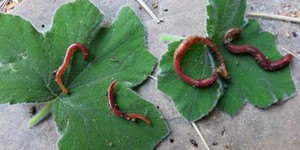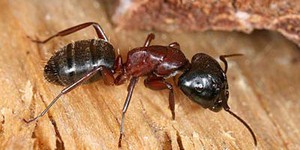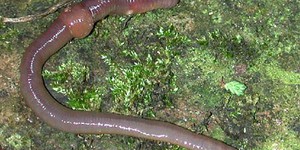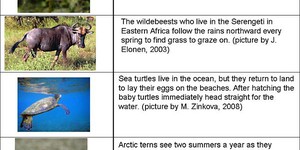First Grade, Zoology Science Projects (11 results)
Animals have developed an amazing variety of body plans, behaviors, and strategies in order to succeed in the struggle for survival. Explore topics ranging from regeneration, camouflage, animal migration, how to attract hummingbirds, and more.
|
Select a resource
Coding Projects
Sort by
|
In the wild there are two types of animals: the hunters and the hunted. A good predator is always on the prowl for fresh prey. What can an animal do to stay off of the menu? Some animals have evolved to use a variety of camouflage tactics so they can fool their predators and increase their chances of survival. In this science project, you will be the hungry predator hunting for M&M® prey. But it may not be as easy as it sounds — some of your prey will be camouflaged. Will they be…
Read more
Have you ever wondered how a chick breathes inside its shell? Every animal needs oxygen to survive, so the chick must get air somehow! Try this science project to discover the answer.
Read more
New
Have you ever walked next to your favorite ocean, lake, or creek and seen plastic waste everywhere? Have you ever thought about how much plastic breaks down into microplastics and pollutes waterways? Scientists are coming up with new ways to remove these microplastics from our waterways, and now you can test them out for yourself at home.
Read more
In this fun science project, you will create a bird feeder from recycled materials that you can set up outside. By observing the birds that come to the bird feeder, you will find out what different kinds of birds live in your area. How many different kinds of birds do you think you will spot?
Read more
Earthworms are important for the soil and fun to study. In this science project, you will find where earthworms like to stay when food is around. Will they gather around the food, take food with them in their tunnels, or not be attracted to the food at all? You will fill four pots with dirt, add food and worms, and track their activity over one week to find out!
Read more
Why is your grandmother always wondering if you are drinking enough milk? Our bones are made out of calcium, a mineral found in milk, and drinking milk can lead to strong healthy bones. What about other animals? What are their bones made of? What kind of bones do they have? Are there animals without bones? Are endoskeletons and exoskeletons made out of the same materials?
Read more
New
Are you ever annoyed by a poor Wi-Fi signal? What about when you try to send a text message, and it just won't go through because of poor cell service? Have you ever wondered what factors affect the strength of your signal and the speed of the connection? If so, this project is for you!
Read more
Do ants sometimes ruin your picnic? There are some chemical ant repellents you can spray to keep them away, but who wants to spray poison all over their food? In this science project you can investigate some less toxic solutions that may be around your home so that your next picnic will not become an ant buffet!
Read more
Do you think worms are gross? Or that they are only good for birds or fish to eat? Well, in this zoology science project, you will find out that this lowly animal helps to put food on your table, too, by all the hard work that it does in the dirt. In this science project, you will discover in what kind of soil it likes to do its work. It is wiggly good fun!
Read more
You might like to play in the autumn leaves and winter snow, but have you noticed that many birds don't like to stick around for the cold weather? And instead of the birds you're used to seeing in the warm months, your new feathered friends might be Canada geese. Why is that? Various types of birds and other animals travel from one place to another either in search of food, warmer temperatures, or other things they need to survive. This type of traveling is called migration. Try starting your…
Read more
Worms are slimy, wiggly, and gross. But did you know that they have many unique abilities? One of the neatest things that worms can do is regenerate, or re-grow, parts of their body. After a piece of a worm is cut off, it can grow back with all of the necessary new parts. How much of a worm can you cut off and still get regeneration? Is one end of the worm better at regenerating than the other? See if you can make heads or tails of this wiggly problem!
Read more
Humans are bipedal, which means we walk using two legs. This gave humans an adaptive advantage during the evolution of humankind. Being bipedal gave humans additional speed, balance and flexibility used for walking, hunting or traveling long distances. However, we may have lost the ability to climb or swing in trees like other primates. How much faster can you go when you are bipedal? Have a race with your friends using two legs, and then four legs (use your arms as your 3rd and 4th legs).…
Read more
|














